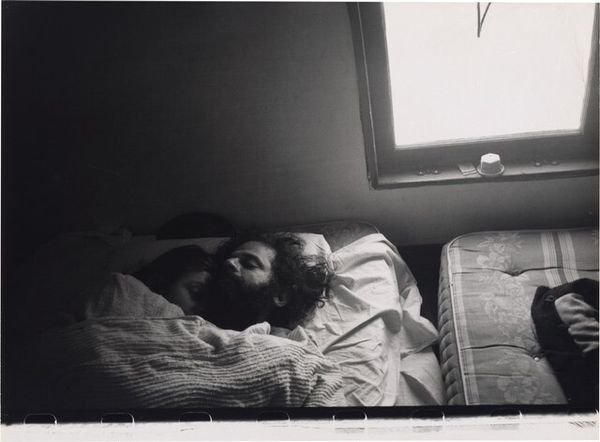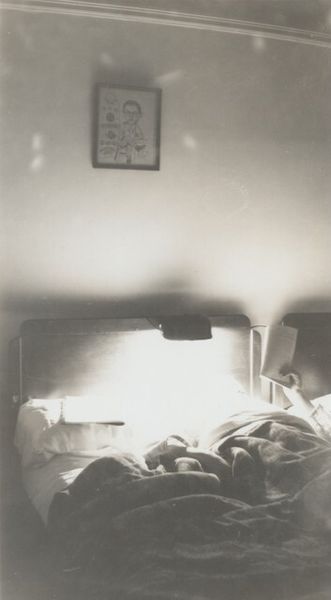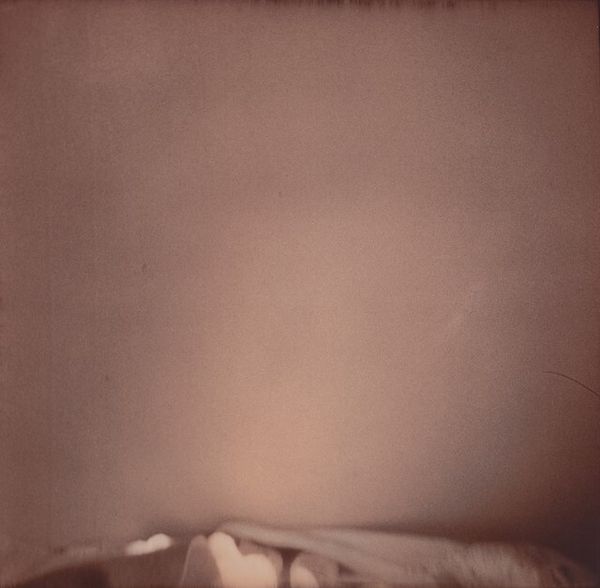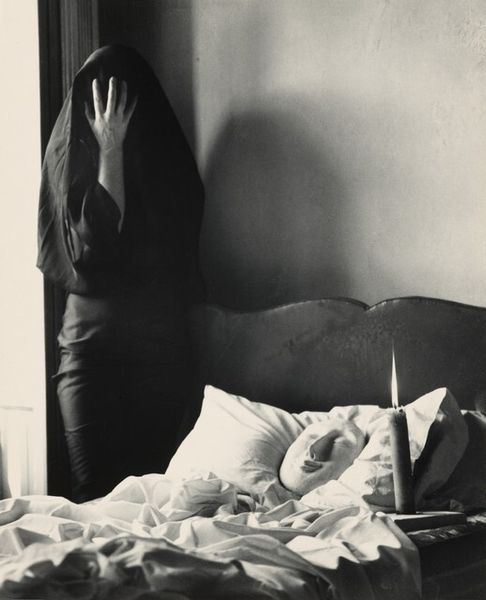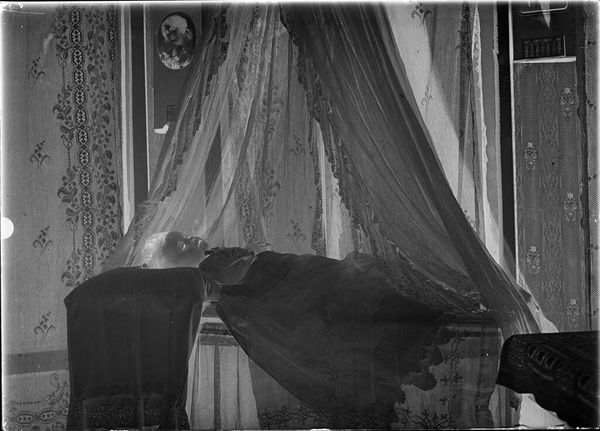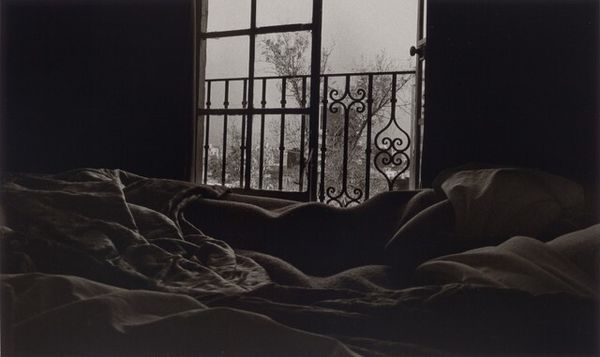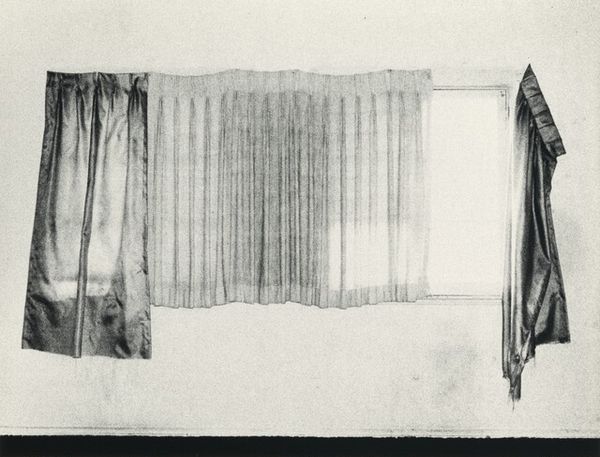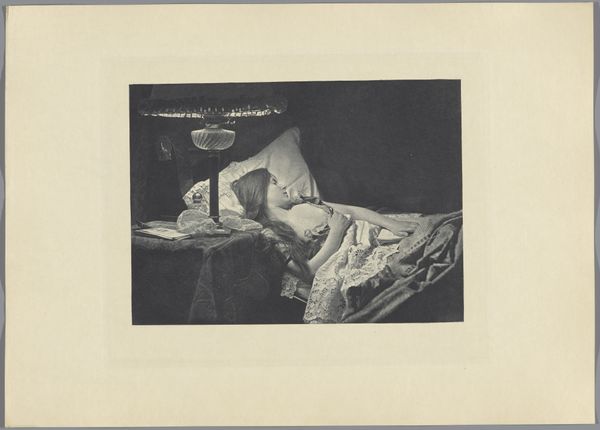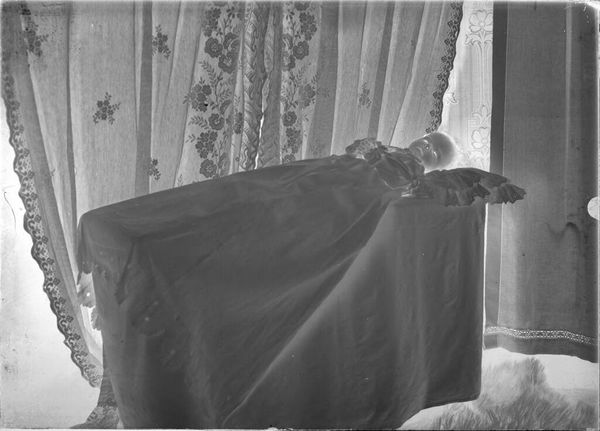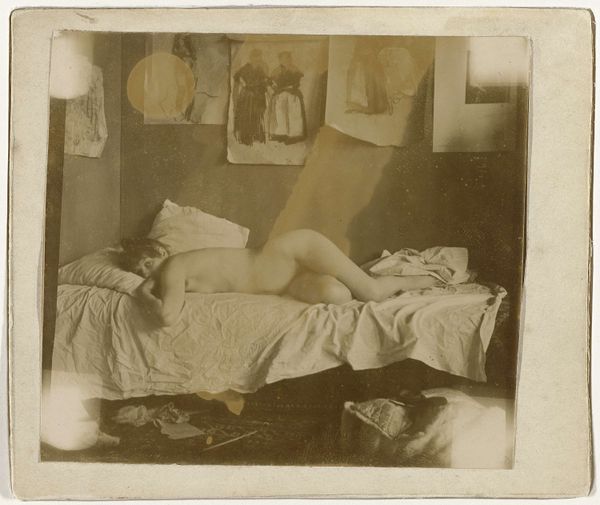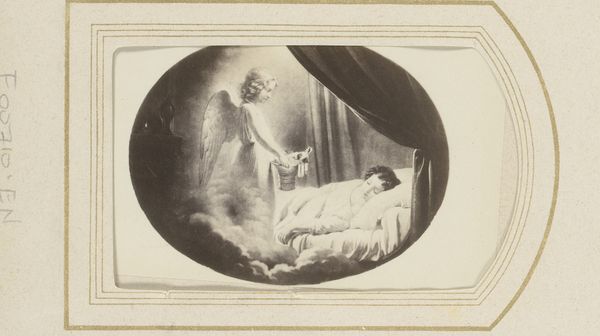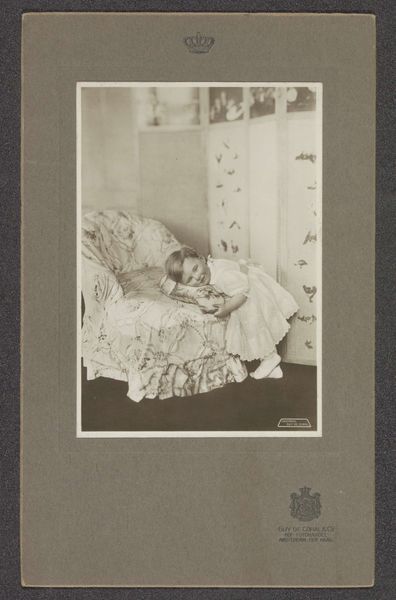
#
film photography
#
wedding photograph
#
photo restoration
#
archive photography
#
culture event photography
#
historical photography
#
old-timey
#
19th century
#
film
#
celebration photography
Dimensions: sheet: 13.6 x 20.3 cm (5 3/8 x 8 in.)
Copyright: National Gallery of Art: CC0 1.0
Julia Margaret Cameron made this study of Adeline Grace Clogstoun using the wet collodion process. This photographic technique, popular in the mid-19th century, involved coating a glass plate with a sticky, light-sensitive chemical emulsion just before taking the picture. What’s striking here is how the materiality of the process shapes the image. The soft focus, the way light flares and pools, these aren't errors. They reflect the inherent qualities of wet collodion. This method, though celebrated for its detail, also demanded a sensitivity to the medium itself. There’s a powerful social context here too. Photography in this era was rapidly democratizing portraiture, yet the labor-intensive process still situated it between a craft and an industry. Cameron's embrace of its imperfections can be seen as an artistic choice that elevates the photograph beyond mere reproduction. It underscores the presence of the artist's hand, a gesture against the mechanization of image-making.
Comments
No comments
Be the first to comment and join the conversation on the ultimate creative platform.
